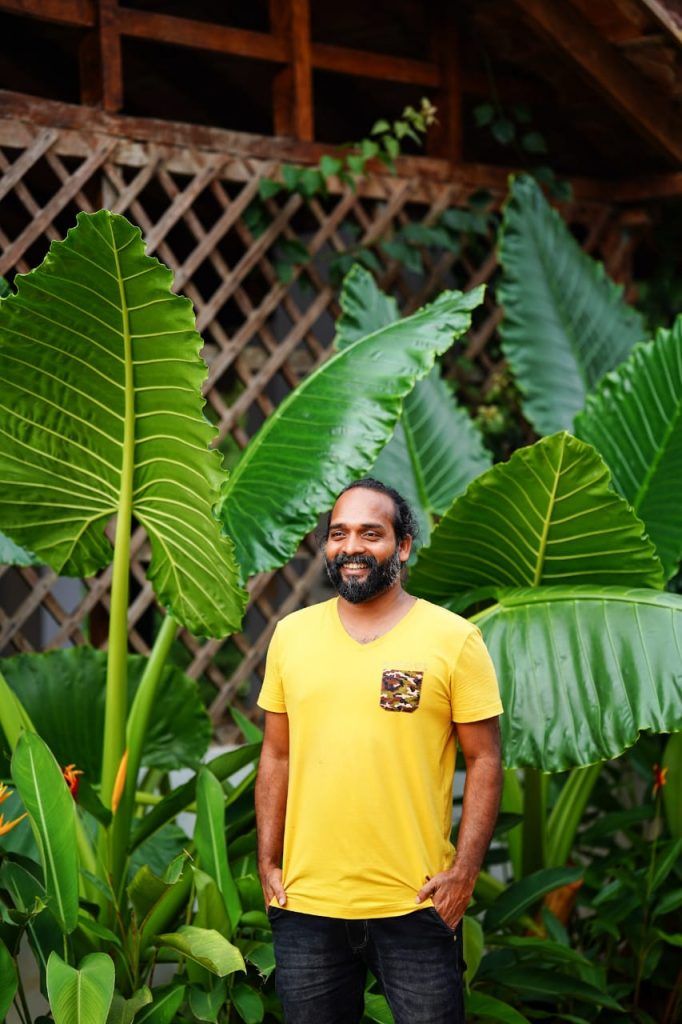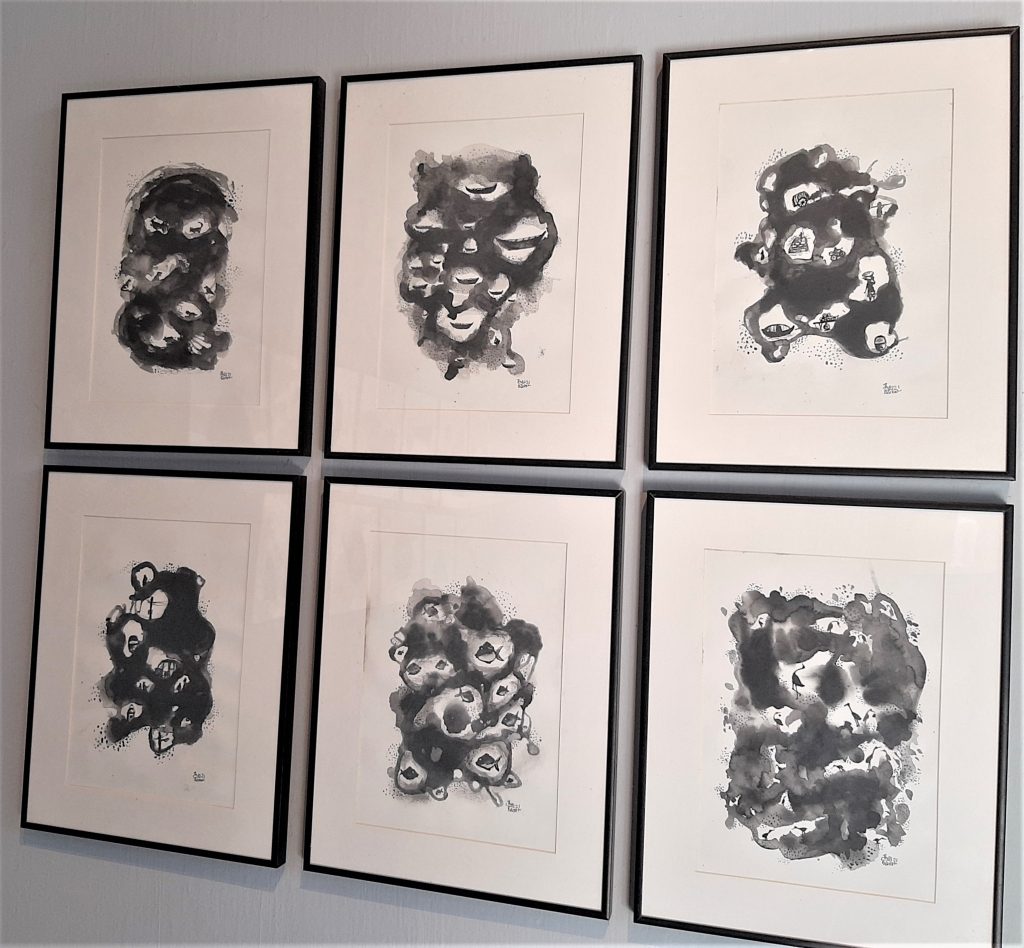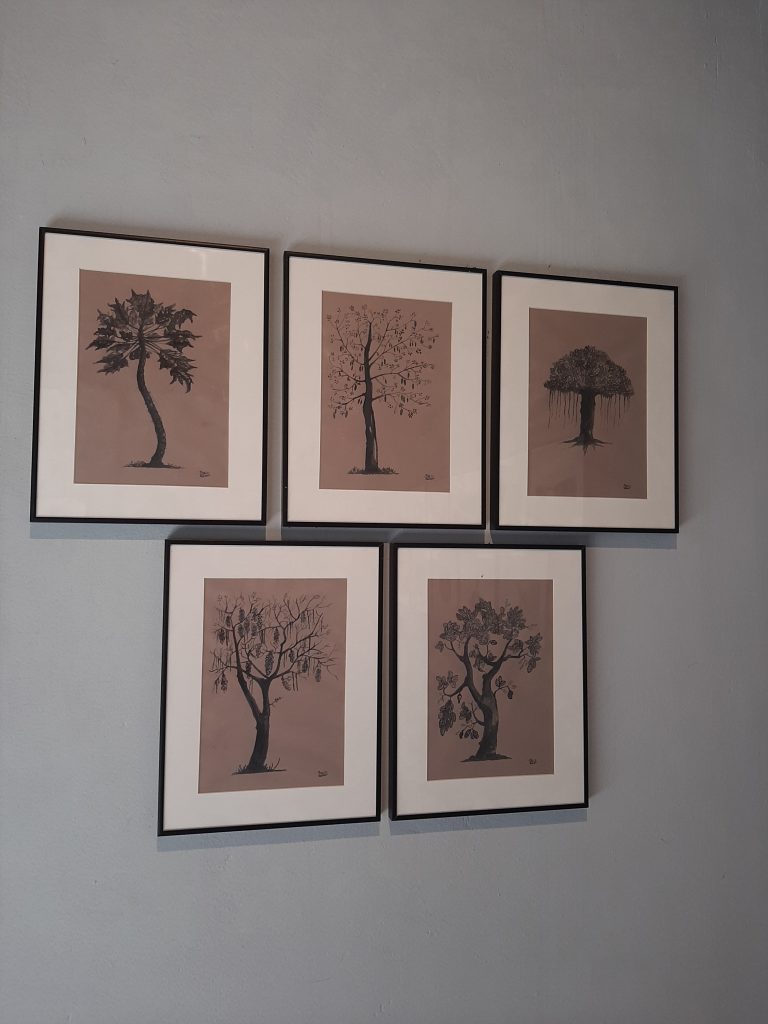“Being an artist is like being a parent,” declares self-taught artist Thaj Backer, standing among his exhibits at the Lokame Tharavadu (The World Is One Family), held in Alappuzha this year.
The relationship of an artist and their art does not end with an exhibition or art show, and there is no end to being an artist, he believes. “From the time of conception till the child moves away, there is a need for supervision. That is how art is – in need of attention from its artist.”
His paintings are simple at first glance: an ode to his hometown Ponnani. But it is not just in the depictions that the homage lies. The surprise is in the ink he has used – the ‘Ponnani ink’. The discovery of this rare ink and the art he created with it helped him cope with the block he was in during the pandemic.
To Never Taking Art for Granted
“My first recollection of my realisation that I could paint was when I was in the 3rd standard. One of my teachers called me to the staff room one day. I felt quite scared. There was only one reason why a teacher would call you there. It was to be scolded!” he says, looking back at that innocent time.
As it turned out, his teacher Sajitha had seen potential in him. She seated him in the staff-room and immediately offered him art supplies. “I told her I didn’t know how to paint. So she guided me for the next few days,” he recollects. Three days later he was informed that he had to take part in a district-level art competition coming up soon. And yet, his journey to taking on art seriously had a lesson to teach him.
On the day of the competition, the teacher in charge of him lost him in the green room. By the time young Thaj found his way to the competition hall on his own, it was too late. “The teacher in charge of the competition said I couldn’t compete anymore. That’s when I turned around and saw the teacher who had lost me. He immediately gave me a beating, asking where I had been,” he says as he recollects the events of that day.
The incident surprisingly did not discourage his young heart. He felt more determined not to lose any more opportunities from then on.
Navigating the Pandemic
Fast forward to the pandemic and Thaj informs that he had to spend four months alone in Bangalore. “At that time I did a series of work titled Udalukalude Unmadham. They were just single drawings that took 5 to 10 minutes to complete. I drew them every day to keep me grounded and to get a breather from the stress,” he says. The series in a way prepared him for what he was about to discover when he got back home to Ponnani when the travel restrictions were eased.

Thaj Backer
“I think the lockdown made us realise that the things we thought were necessary to survive life were not that important after all. Food was one such thing. I realised that there were things beyond just food. For me, art was something that I relied on. I saw many others move towards art too, especially because one derives a sense of satisfaction from it,” he observes.
He struggled with the block he was in, even after being back home. The lack of access to materials because of delivery restrictions did not help either. “I was forced to look inwards -that is to look for what was available locally – as we were still cut off from the outside world,” he informs.
Rediscovering a Piece of His Childhood
He was reminded of an initiation ceremony from his childhood days during this process.
The Kayi Ezhuthu was practised in the Madrasa when enrolling children. These children were made to write for the very first time using a special ink. The ink was then meant to be licked and ingested by them. “The belief behind this is that following the ceremony, the child will be able to read the Quran easily,” he informs.
His search for the ink began with these recollections. During his research, he found out the ink was also used for some medicinal purposes as well. This made him realise that the ink was edible. “It was produced in different ways. One of them was using charcoal made out of coconut shells and mixing it with powdered rice. Another way to prepare the ink is by using the peel of a fruit called punnakaya,” he says, explaining that the peel of the fruit is dried in the sun, specifically during summer, for 3 to 4 months and then charred and powdered.
The powders are usually mixed with resin from trees to help them stick on the paper. This ink was also used to write the text in Qurans. For this rose water would be added to the concoction so that the ink got a flowery fragrance. This is where Thaj believes the ink got its name associated with Ponnani. The books were written in a rare Arabic script that is native to Ponnani.
The Experimentation and Exploration
Thaj was delighted with his research. The fact that this ink was used to write on paper, meant he could contribute a new way of using the ink, within his capacity as an artist. “I wasn’t sure if I would be able to paint with it. Calligraphy using this ink was usually done using bamboo sticks. So while using a brush, I had to use it very delicately,” he explains.
It was interesting to try and understand the temperament of the ink. He had to create some of his work in just a couple of strokes. “You should already know what it is that you want to paint, what are the elements and where do you want to place them,” he shares. Each piece of work took different amounts of time to finish depending on what he had in mind.
The Artworks

The series- Townscapes- Where Thaj has tried to portray the landscape of everyday sights, life and their connections. The little spots are specks of sand, he shares.

The trees are important to every Malayali, according to Thaj. His series Ilakal Pacha depict trees that any Malayali would have fond memories associated with. He calls them ‘Malayali Marangal’ (Malayali Trees) as well.
The series Coconut Shore is the reflection of what he sees and adores about his hometown. “This is a memory walk for me. A walk back to where I started. In every image, there is life,” he points out happily. In a particular piece, he has painted the Conolly Canal that was used in the past to transfer goods all over Kerala. “It was more than just a market. It was like a celebration,” he says, implying how full of life the place had been in the past. There are also depictions of Ponnani’s alignment to left politics and some heritage structures.

“Coconut Shore” depicts the shades of Ponnani
But on the whole, Thaj believes one can find all these things anywhere in Kerala. So his paintings can be interpreted more broadly, by whoever sees them.
The Limitless Possibilities of Art
“Our actions shouldn’t be materialistic. The result of this series is that many people have gone back to Ponnani in search of this ink. That ability to take people back, only an artist has,” acclaims the proud artist.
Thaj doesn’t believe in sticking to one style or technique. He is irked when people ask him if he will now only work with the rare Ponnani Ink. ”I want to keep moving. I have the ability and space to explore. If you want to survive as an artist today, you need to be multidisciplinary because art has started communicating beyond studios,” he comments.
For Thaj Backer, the purpose of his practice is much bigger than creating something aesthetically pleasing. The possibilities that art provides as a medium of expression and exploration are innumerable, he believes.
It is not limited to using paper and a paintbrush. Hence he has not restricted himself either. He also has experience in performing arts and theatre. The purpose of his work may range from deriving mental satisfaction to raising a political statement. All of which and more, Thaj has experienced in his life as an artist.
